For surveying and mapping professionals, LiDAR and Photogrammetry have long been necessary tools of the trade. But recent advances in drone technology have changed the way that data is captured for the better.
Compared to traditional aerial surveying - which relied almost exclusively on manned aircraft - drones offer a safe, accurate, and more affordable alternative. The result has been the democratization of surveying solutions. Now, projects in agriculture, construction, conservation, mining, crash scene reconstruction, and more can benefit from detailed point clouds, accurate maps, and 3D models.
For established surveyors and those who are new to the field, the question of whether to work with LiDAR or Photogrammetry will be familiar. In this article, we’re going to take you through the pros and cons of both methods. It’s not that one is simply better or should be preferred over the other no matter what. The right decision is instead dependent on the specific task at hand, the skills of the operator in question, and, as ever, the budget that you’re working with.
What is LiDAR?
LiDAR is short for ‘light detection and ranging’. LiDAR sensors work by emitting pulses of light and measuring the time it takes for them to reflect back off the ground, along with the intensity with which they do so.
Although it’s been around for decades, it’s only in recent years that LiDAR technology has become compact enough to integrate onto a payload that a drone can carry.
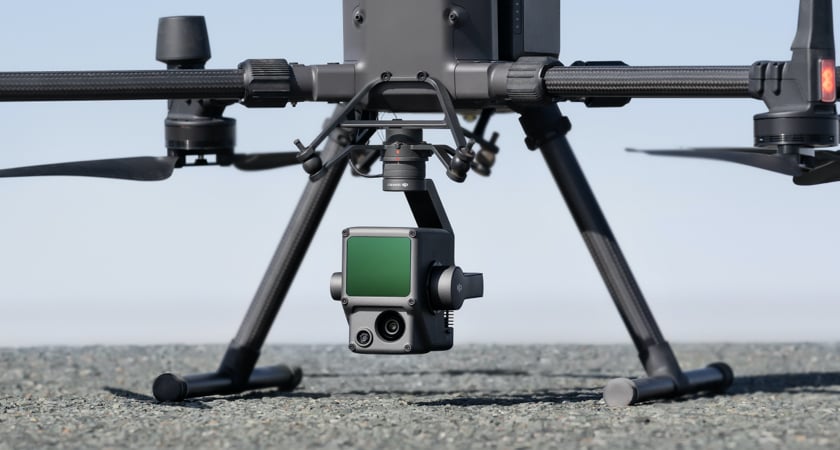
The LiDAR sensor represents just one part of a complicated process. To gather the data needed to build a point cloud that accurately reflects terrain and its topography, LiDAR incorporates other high-accuracy systems: satellite positioning (GNSS data) and an inertial measurement unit (IMU).
With a little bit of software magic, LiDAR flights can be used to build 3D point clouds and intensity maps - both of which need plenty of skill to interpret but provide invaluable data in mining, forestry, agriculture, and construction operations.
The Pros of LiDAR
The most cited positive of using LiDAR for mapping is the technology’s accuracy. But as a standalone statement that doesn’t give us much to work with.
First, it’s important to consider what accuracy means for you and your project. Are you prioritizing accuracy that’s relative or absolute? In other words, are you concerned about your end product being accurate in terms of its features in relation to each other, or its features in relation to their place in the world?
LiDAR is the way to go for absolute accuracy and is typically the best choice when the aim is a realistic bare earth model. That’s because it’s the best method for accounting for elevation, vegetation, and the conditions at hand.
LiDAR’s integration with GNSS data and the fact that it’s a direct measurement - firing out thousands of laser pulses from above - ensure your final digital terrain map has extreme vertical accuracy.
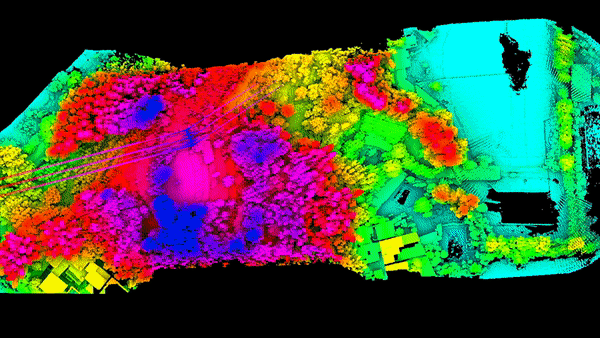
Topographical complications don’t only come in the form of terrain undulations. Vegetation can also block photo-based surveying methods from getting granular ground-level data.
LiDAR’s light pulses penetrate the gaps between leaves and branches, reaching the ground below and improving the accuracy of measurements.
LiDAR is also preferable if the light conditions of your worksite are inconsistent. If you want to carry out night-time surveys or low visibility missions, LiDAR can handle the task without needing an external source of light.
Lastly, LiDAR allows you to capture details that are small in diameter. A great example of this is power cables. Thanks to high-density point sampling and the direct measurement approach, you can use LiDAR to accurately map cable catenary.
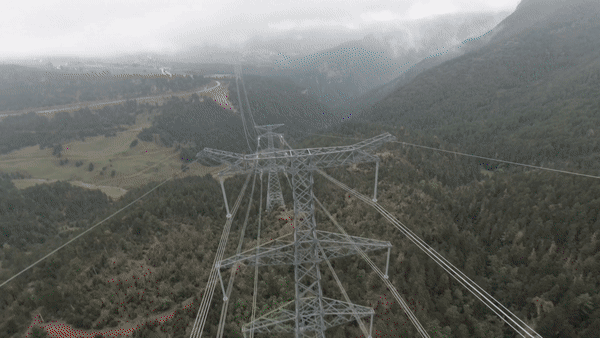
The Cons of LiDAR
The most obvious challenge that comes with working with LiDAR is its cost. Because of the greater operational complexity (and the need for more sophisticated components and sensors), you can easily spend hundreds of thousands of dollars on a complete survey solution.
This complexity also widens your room for error and increases the dependence on an experienced professional. With multiple sensors and information that’s not readily accessible without a fair amount of processing, extracting the data you need isn’t straightforward.
It’s also important to bear in mind that traditionally LiDAR sensors have been bulkier than simple cameras. With drones becoming increasingly popular for aerial surveying, the need for a bigger drone to handle a heavier payload can add to an already significant expense.
The final downside of choosing LiDAR is arguably its greatest strength: The fact that it’s the best tool for the job in very specific situations. For many applications, regular photogrammetry will be sufficient. This is a trend that’s gathering momentum as image processing software improves.
What is Photogrammetry?
Put simply, photogrammetry is a way of measuring distances using photographs. These photographs are processed using specialist software to generate accurate and realistic models of the world.
Orthomosaic maps and 3D models have a variety of applications, from construction planning and ongoing project management to marketing material.

The number of images you need for effective photogrammetry can range from hundreds to thousands. It all depends on the size of the site in question and the depth and accuracy you want to achieve.
Drone pilots will have to determine the optimal flight altitude to get the ground sample distance needed. You’ll also have to set up an overlap on each picture to ensure your software can seamlessly stitch your images together.
The Pros of Photogrammetry
The main benefit of working with photogrammetry is its accessibility. The rise of drone technology and mapping software has simplified workflows and brought accurate maps and 3D models within reach of any organization with a decent camera drone.
Aside from camera calibration, basic flight planning, and plotting your ground control points, carrying out a mapping mission and turning that data into something useful is relatively straightforward. There are countless scenarios in which this process produces tangible results, in industries as varied as construction, conservation, mining, and agriculture.
Importantly the results are accessible, too. Maps and models with recognizable features and colors are instantly intuitive, making them a great collaborative tool and something stakeholders can work from without spending too much time manipulating the data.
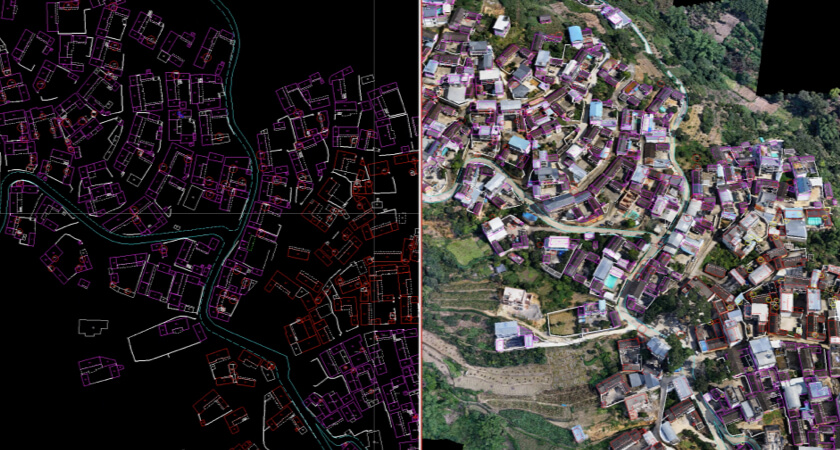
Another big part of Photogrammetry’s appeal is how affordable it is. As we’ve touched upon, getting started means investing a few thousand dollars on a professional camera drone and much less than that on the software you’ll need to process your data.
Finally, Photogrammetry offers a more flexible approach. Depending on the task at hand, you can have more control over the trade-off between mission speed, altitude, and accuracy.
The Cons of Photogrammetry
There are some downsides to surveying methods based on Photogrammetry.
The first is that the accuracy of your maps and models is highly dependent on the quality of your drone’s camera and the drone itself.
Sensor size, aperture, resolution, and focal length all impact your ground sample distance (GSD) alongside the altitude you are flying at. On top of that, you’ll struggle to produce results with absolute accuracy without several using ground control points or an RTK or PPK enabled drone.
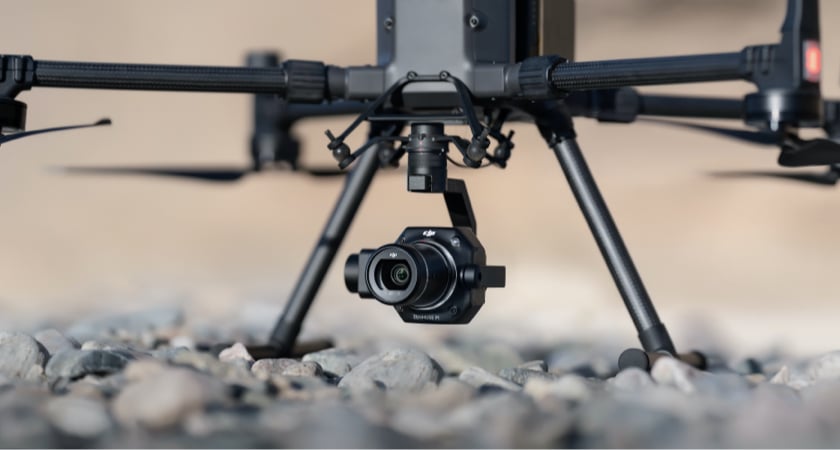
The second challenge facing your Photogrammetry ambitions is the weather. Or, to be more specific, the light conditions. Darkness, cloud cover, dust, and more can all negatively impact the quality of your surveying results.
When it comes to data processing, you can only measure what you can see clearly. This means that flights with limited visibility - whether due to vegetation, shadows, or the time of day - will produce fewer ground points and less accurate maps and models.
When to Choose LiDAR
LiDAR is recommended if you’re mapping complex terrain with a high percentage of vegetation coverage. Because of its direct measurements that penetrate between leaves, branches and trees, you can build accurate topographical point clouds with the resulting data.
The technology is also ideal for accurately measuring objects such as cables, which are generally too thin to be recognized by any other method.
LiDAR should also be your method of choice if the surveying task at hand demands accuracy above all else. Although this is not without its challenges, which come in the form of cost and the expertise required to bring the data to life.
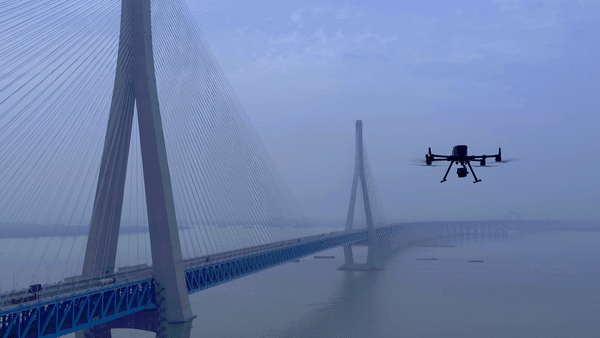
Choose LiDAR for:
- Mapping hard to access, complex, and overgrown terrain
- Capturing details on thin structures, such as power lines or roof edges
- Projects where detail and precision are the priorities
When to Choose Photogrammetry
The affordability of photogrammetry makes it a preferable option for those who are new to surveying with drones. Although being cheaper than LiDAR isn’t its only benefit.
In fact, plenty of applications would be better served sticking with Photogrammetry. This is particularly the case when you want to work on plans using orthomosaic maps, collaborate using 3D models, or provide accessible project progress updates for a relatively small cost.
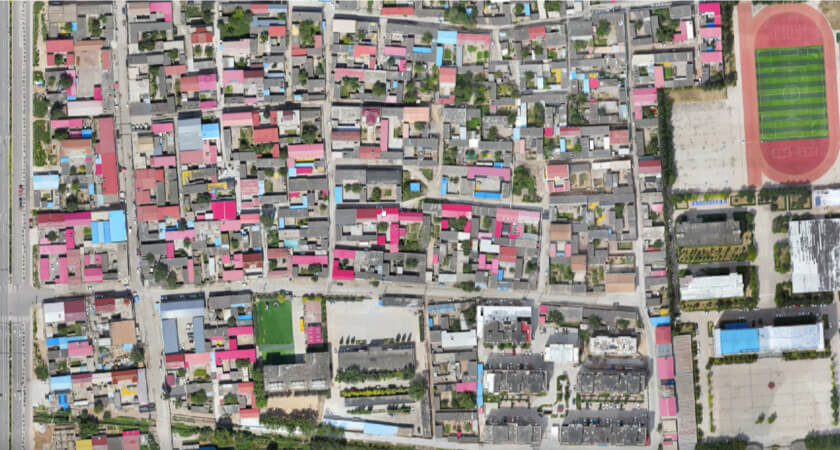
Choose Photogrammetry for:
- Context-rich scans that are accessible and require minimal post-processing and expertise
- Maps and models that are easy for untrained eyes to understand
- Datasets that need visual assessment
LiDAR vs Photogrammetry: Which is more accurate?
Just like the true-color point clouds made by the DJI L1, the answer here isn't as simple as black and white.
LiDAR tends to produce scans with greater detail and accuracy compared to photogrammetry. Plus, because it can operate well despite environmental challenges - think low light or lots of vegetation - it’s ideal for scenarios in which you value accuracy above all else.
LiDAR point clouds can be incredibly granular, with up to 500 points per square meter and a vertical elevation accuracy of under three centimeters. With a high density of data points comes a more robust dataset, which in turn gives you more versatility when it comes to processing your findings.
That’s not to say that Photogrammetry is inherently inaccurate. If your terrain is relatively simple and free from dense vegetation, you can still build highly detailed maps and models - particularly if you’re also using an RTK positioning module.
LiDAR vs Photogrammetry: The data
LiDAR and Photogrammetry are fundamentally different methods of gathering data.
With LiDAR you end up with thousands of data points that form a 3D point cloud outlining the terrain in question. You’ll need to incorporate color from separate datasets to turn it into something visually accessible.
With Photogrammetry, you end up with hundreds or thousands of images that have to be processed and stitched together to produce something of value: be that a 3D point cloud, a map, or a navigable model.
Cloud-based LiDAR processing isn’t as prevalent or accessible as cloud-based Photogrammetry software. Which means you’ll have to have an on-site specialist who can turn that raw data into something actionable, alongside the correct software.
DJI’s Photogrammetry Solutions
Phantom 4 RTK
The Phantom 4 RTK offers professional surveyors an ideal balance of price, accuracy, and accessibility.
With its onboard real-time kinetic (RTK) sensor, photos are geotagged automatically and corrected against ground control points with centimeter-level accuracy.
The Phantom 4 RTK represents a smart introductory investment no matter your surveying needs.
Matrice 300 RTK + P1
This combo is DJI’s flagship photogrammetry solution. The P1 is an advanced Photogrammetry payload with a full-frame sensor and interchangeable fixed-focus lenses. A global mechanical shutter and software features including Smart Oblique Capture make it ideal for large-scale photogrammetry flights. Leveraged by the M300 RTK, the P1 enables surveyors to cover 3 km2 in a single flight and achieve 3 cm horizontally / 5 cm vertically accurate results without GCPs.
DJI’s LiDAR solutions
Matrice 300 RTK + L1
The L1 houses a Livox LiDAR module, a high-accuracy IMU, and a camera with a 1-inch CMOS on a 3-axis stabilized gimbal. With 5 cm vertical accuracy and 10 cm horizontal accuracy, and the capacity to cover 2 km2 in a single flight, the M300 RTK, the L1, and DJI Terra together form a comprehensive surveying solution that offers 3D data, details of complex structures, and precise visual reconstructions.
Learn more about DJI's surveying solutions with our Surveying Buying Guide.
Final thoughts
Assessing LiDAR and Photogrammetry as two competing data capture methods isn’t the most instructive approach. As we’ve touched on, it’s not that one is necessarily better than the other. Ultimately it’s the task at hand that will determine the best solution.
If the contrast, lighting, subject, and conditions are in your favor, photogrammetry is probably more than adequate for the job. But for challenging mapping projects where elevation accuracy, complex structures, or partly shrouded terrain are involved, LiDAR is probably the way to go.
Of course, the cost and experience of your team will also play an important role in any decision between the two. Although DJI’s latest payloads, the P1 and L1 are testaments to the growing affordability and accessibility of surveying technology.
Ultimately, professionals in the field will need to become adept at using both technologies as the drones that carry them become more sophisticated.

.png?width=1920&name=P4RTK%20VR%20Rendering%20(4).png)
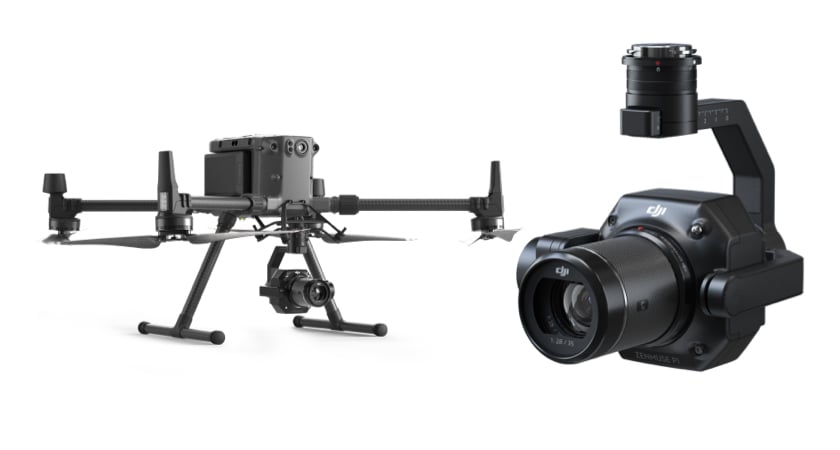
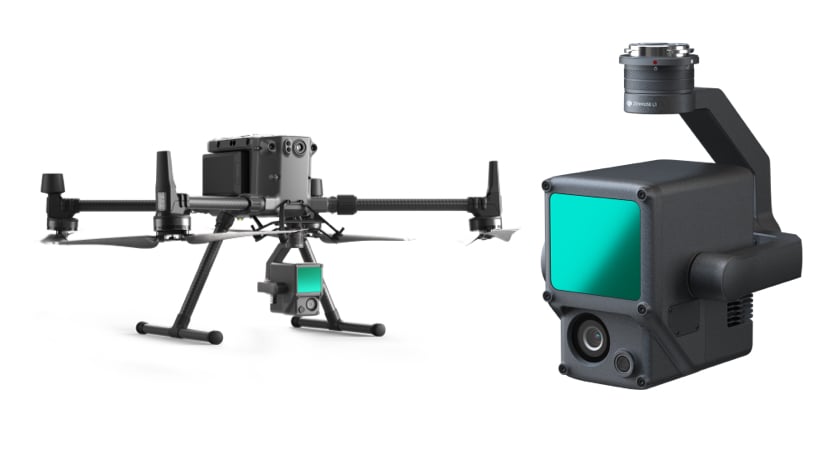

.png?width=300&name=L3kv%20(1).png)

.png?width=300&name=FH2%20update%20(1).png)
-1.png?width=300&name=HS%20-%20Featured%20Images%20(3)-1.png)